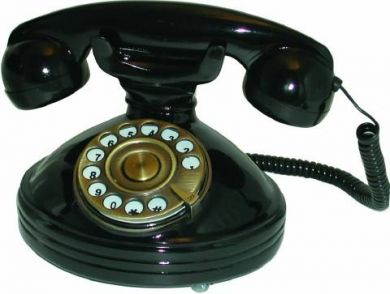Pumping the Phone

Area code 605 covers the entire state of South Dakota, the 77,000 square mile home to roughly 800,000 Americans. At 10.5 people per square mile, it is the fifth least dense state, ahead of Alaska (1.2), Wyoming (5.8), Montana (6.8), and North Dakota (9.7). Nevertheless, you may have called South Dakota recently – even if the people on the other line were not there — most likely, via a free conference call (or sex chat, if that’s your game) service.
These services are one of a few which use phone numbers in South Dakota, Wyoming, and Iowa as call-in numbers for your group to chat. The reason they do so: an odd loophole created by Congress in the 1930s.
Congress wished to ensure inexpensive telephone access across the country, but was met with a problem. The infrastructure costs involved – running phone cables, for example – are enormous, and more a function of land area than population. When dealing with an extremely rural area such as South Dakota, the cost of providing telephone access became an enormous barrier.
The solution? Whenever someone places a long-distance call, the long-distance service provider needs to buy their way into the local telephone exchanges. Typically, federal regulations allow the local company to charge the long-distance provider about half a cent per minute, an easily affordable fee. But rural telephone companies, given the low call volume they handle, are allowed to charge more – sometimes, as much as 10 cents per minute.
That works fine and good, so long as the rural telco’s phone call volume stays predictably low. The trick, then, is to artificially increase the number of calls made to these rural numbers.
These conference call lines (and, again, sex chat lines) use a scheme called traffic pumping, designed to increase the number of calls made to these area codes and handled by the rural telephone companies in question. The effect is enormous. By way of example, one rural telco’s usage went from 1.5 million minutes in April 2005 to almost 25 million (yes, twenty-five million) in October 2006 – that’s more than a 1,500% increase in only 18 months. The calls themselves are free to the caller, outside of any long distance fees they’d typically pay to their provider – which in almost all cases, is under 10 cents per minute (see, e.g., this price breakdown). The long-distance providers pay the hefty per-minute fee described above to the rural telephone companies. The rural telcos, in turn, share these revenues with the conference call provider – a win/win, at least for them.
For the long distance providers? AT&T estimated that the traffic pumping scheme cost them as much as $250 million in 2007 alone. The problem will likely continue; in 2010, the South Dakota legislature debated a bill which would prevent the rural telcos from sharing their access fees with others, but the bill failed 37-31.
Bonus fact: As of May 2010, 24.5% of American homes had at least one cellphone but did not have a landline.
From the Archives: The 411 on Area Codes: Where do area codes come from, anyway?
Related reading: “America Calling: A Social History of the Telephone to 1940” by Claude S. Fischer. It’s from 1994 and has only two reviews, but both (one 5-stars, one 3-stars) are substantive. Available on Kindle for $9.99.

Leave a comment